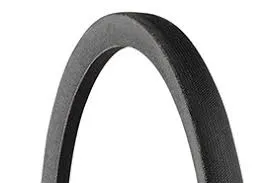- Arabic
- French
- Russian
- Spanish
- Portuguese
- Turkish
- Armenian
- English
- Albanian
- Amharic
- Azerbaijani
- Basque
- Belarusian
- Bengali
- Bosnian
- Bulgarian
- Catalan
- Cebuano
- Corsican
- Croatian
- Czech
- Danish
- Dutch
- Afrikaans
- Esperanto
- Estonian
- Finnish
- Frisian
- Galician
- Georgian
- German
- Greek
- Gujarati
- Haitian Creole
- hausa
- hawaiian
- Hebrew
- Hindi
- Miao
- Hungarian
- Icelandic
- igbo
- Indonesian
- irish
- Italian
- Japanese
- Javanese
- Kannada
- kazakh
- Khmer
- Rwandese
- Korean
- Kurdish
- Kyrgyz
- Lao
- Latin
- Latvian
- Lithuanian
- Luxembourgish
- Macedonian
- Malgashi
- Malay
- Malayalam
- Maltese
- Maori
- Marathi
- Mongolian
- Myanmar
- Nepali
- Norwegian
- Norwegian
- Occitan
- Pashto
- Persian
- Polish
- Punjabi
- Romanian
- Samoan
- Scottish Gaelic
- Serbian
- Sesotho
- Shona
- Sindhi
- Sinhala
- Slovak
- Slovenian
- Somali
- Sundanese
- Swahili
- Swedish
- Tagalog
- Tajik
- Tamil
- Tatar
- Telugu
- Thai
- Turkmen
- Ukrainian
- Urdu
- Uighur
- Uzbek
- Vietnamese
- Welsh
- Bantu
- Yiddish
- Yoruba
- Zulu
Sep . 02, 2024 22:20 Back to list
timing belt drive
Understanding Timing Belt Drives A Comprehensive Overview
Timing belt drives are an essential component in various mechanical systems, playing a crucial role in synchronizing the movement of machinery and engines. This article explores the fundamentals of timing belts, their functionalities, applications, and the advantages they offer.
What is a Timing Belt?
A timing belt is a type of flexible belt made from reinforced rubber or synthetic materials that features teeth on its inner surface. These teeth mesh perfectly with the gears or pulleys of the connected components, preventing slippage and ensuring accurate timing between the parts they drive. The primary function of a timing belt is to maintain the synchronization of rotating elements, such as the crankshaft and camshaft in an internal combustion engine, thereby coordinating the opening and closing of the engine's valves.
How Timing Belt Drives Work
Timing belt drives operate on a simple yet efficient principle. By connecting various mechanical components, the belt transmits power from one rotating element to another. The toothed design allows for a high degree of accuracy and avoids the issues related to slippage, which can occur with traditional flat belts. As the driving pulley rotates, it engages with the teeth of the timing belt, which, in turn, drives the adjacent pulley. This precise connection leads to synchronized movement, which is vital for optimal performance in many applications.
Applications of Timing Belt Drives
Timing belt drives are widely used across multiple industries. In the automotive sector, they are critical for engine timing, ensuring that the engine valves open and close in harmony with the pistons' movement. This synchronization is vital for engine efficiency and longevity.
timing belt drive

Beyond automotive applications, timing belts are also found in various industrial machinery, such as conveyor systems, printing presses, and robotics. Their ability to provide reliable power transmission and control over mechanical components makes them ideal for any application that requires precise motion control.
Advantages of Timing Belt Drives
1. High Efficiency Timing belts can achieve high levels of efficiency (90% or higher) compared to other transmission methods, such as chain drives, due to reduced friction and slippage.
2. Low Noise Operation The rubber or composite materials used in timing belts tend to absorb sound and vibrations, leading to quieter operation than metal chains or gears.
3. Lightweight and Compact Timing belt drives are generally lighter and more compact than alternative technologies. This characteristic allows for more flexible design options in machinery.
4. Less Maintenance Required Timing belts require less maintenance than chain systems because they are sealed, reducing exposure to contaminants and wear. However, periodic inspections are still essential for longevity.
Conclusion
In summary, timing belt drives serve a fundamental role in various mechanical systems, notably in automotive engines and industrial machinery. Their ability to provide synchronized operation with minimal maintenance makes them an invaluable choice for designers and engineers. As technology continues to evolve, timing belt drives will likely see further advancements, continuing to enhance the efficiency and reliability of the machines we depend on. Understanding their importance can aid in making informed decisions in design, maintenance, and overall mechanical system optimization.
-
Korean Auto Parts Timing Belt 24312-37500 For Hyundai/Kia
NewsMar.07,2025
-
7PK2300 90916-T2024 RIBBED BELT POLY V BELT PK BELT
NewsMar.07,2025
-
Chinese Auto Belt Factory 310-2M-22 For BMW/Mercedes-Benz
NewsMar.07,2025
-
Chinese Auto Belt Factory 310-2M-22 For BMW/Mercedes-Benz
NewsMar.07,2025
-
90916-02660 PK Belt 6PK1680 For Toyota
NewsMar.07,2025
-
drive belt serpentine belt
NewsMar.07,2025

